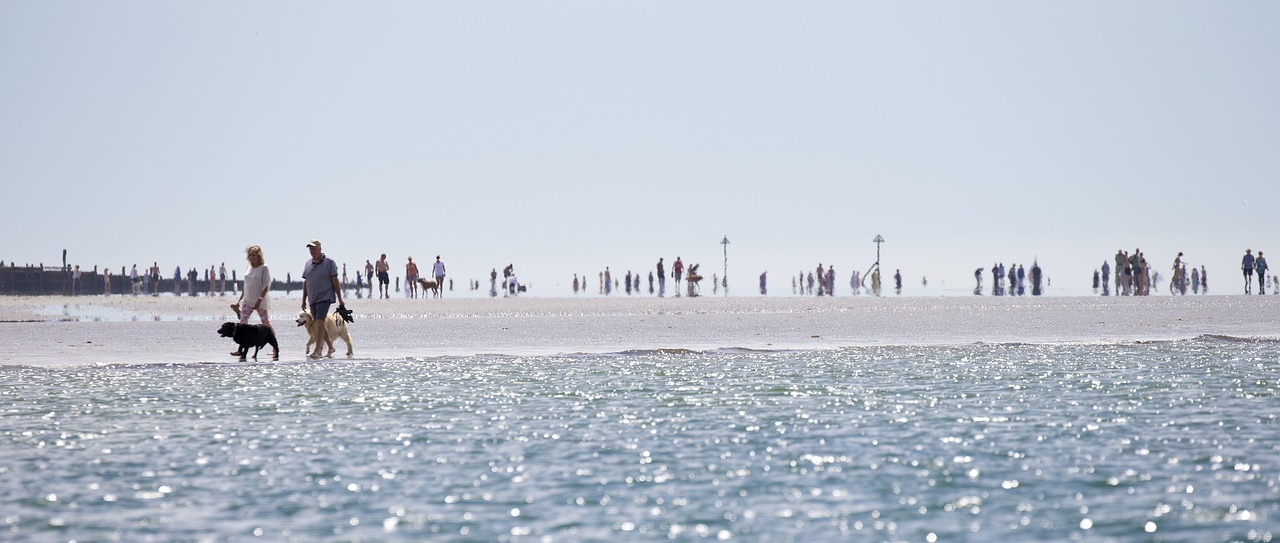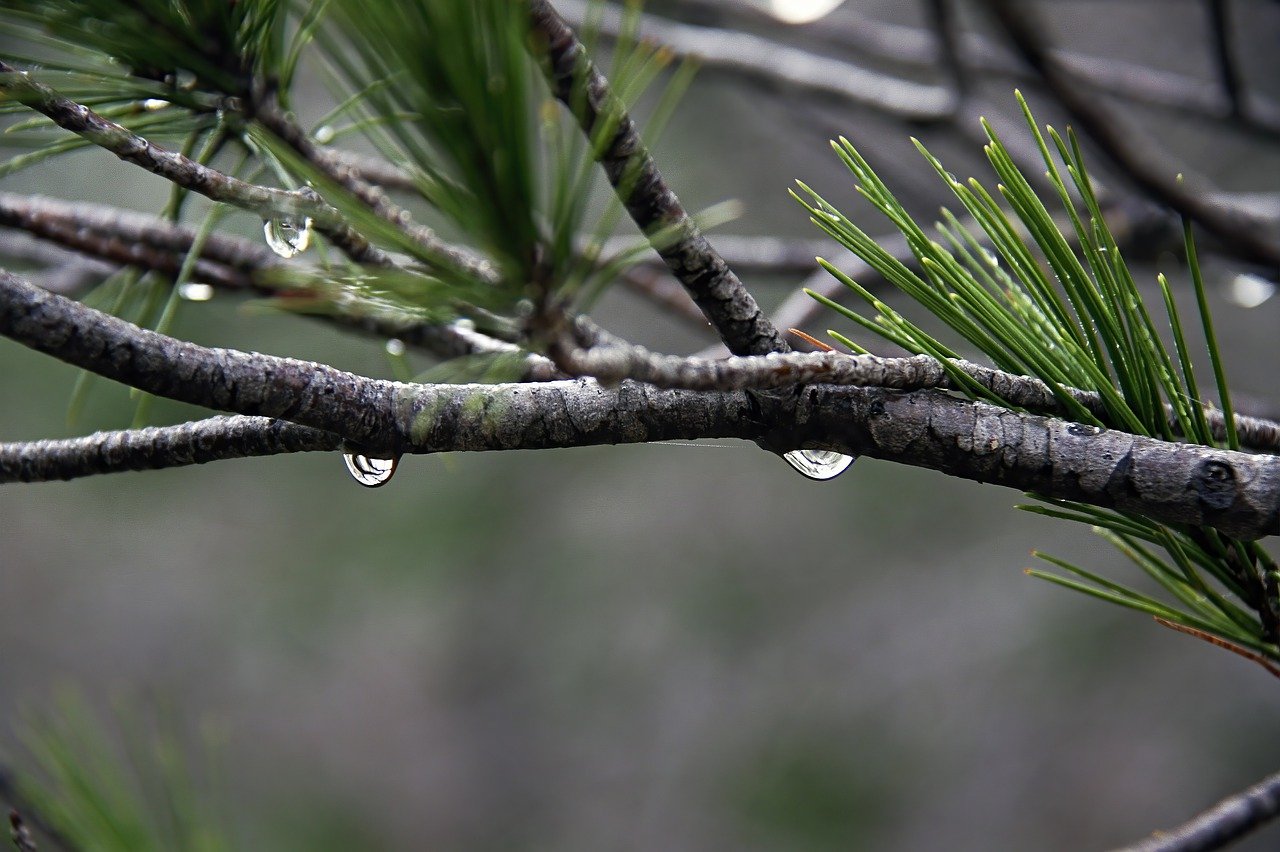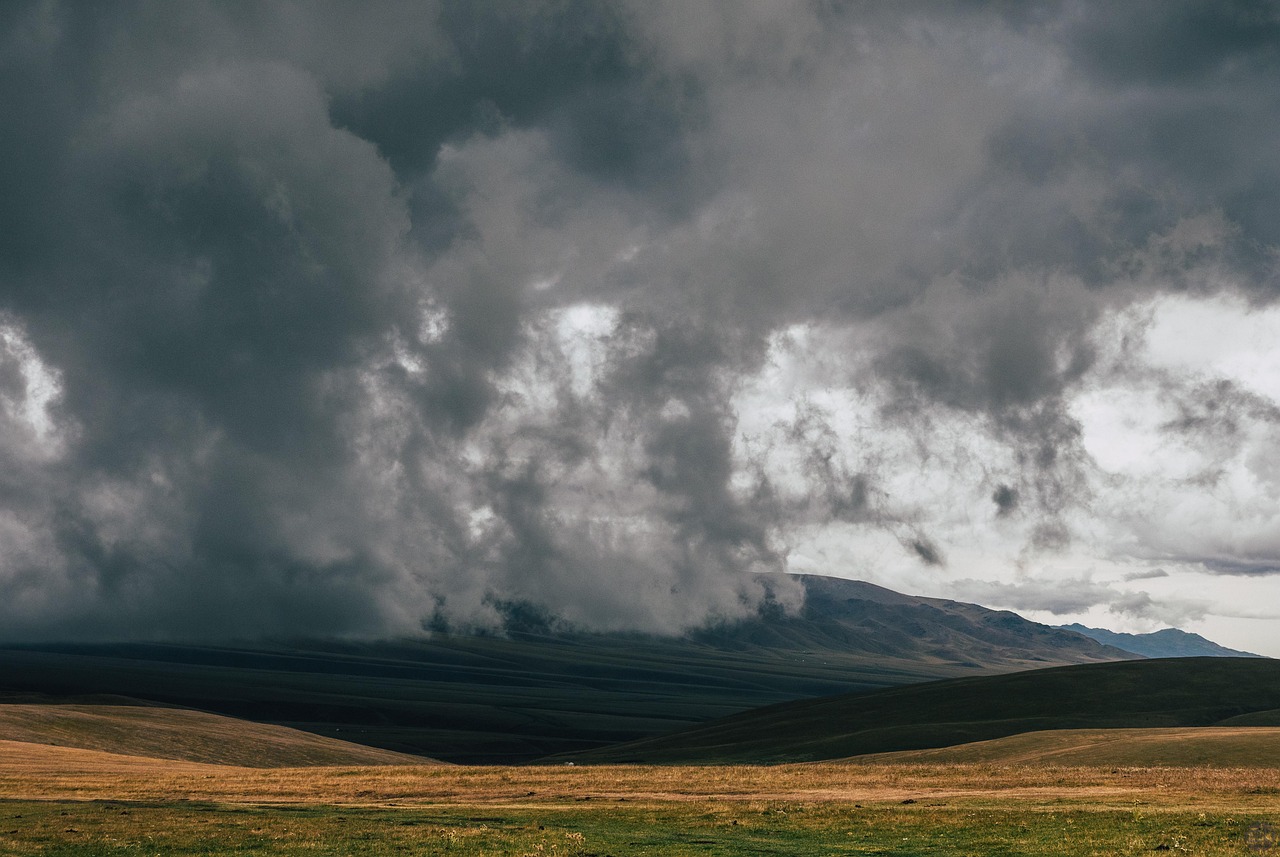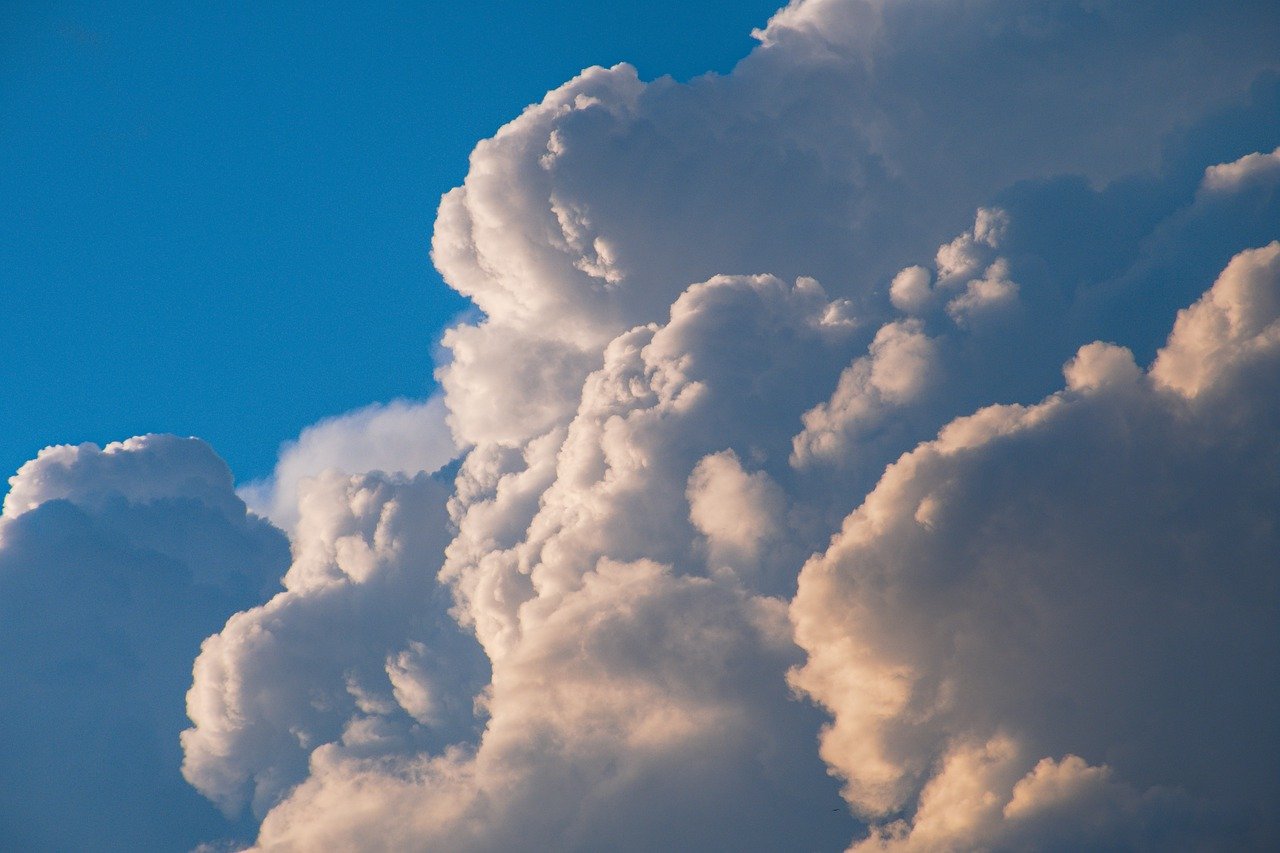How to Stay Updated with Weather Alerts?
In today's fast-paced world, staying informed about weather alerts is more crucial than ever. With climate patterns becoming increasingly unpredictable, having access to timely weather information can make a significant difference in ensuring your safety and preparedness. Whether you're planning a weekend getaway, heading to work, or just enjoying a day outdoors, knowing what the weather has in store can help you avoid unexpected surprises, like getting caught in a downpour without an umbrella or facing severe storms unprepared.
So, how can you stay updated with weather alerts effectively? The good news is that there are numerous tools and methods at your disposal. From weather apps that provide real-time notifications to local news broadcasts that keep you informed about your community, the options are plentiful. In this article, we'll explore various ways to ensure you're always in the loop regarding weather conditions. You'll learn about the importance of understanding different types of weather alerts, how to choose the best apps, and even the role social media can play in keeping you informed. Let's dive in!
Weather alerts are crucial notifications that inform the public about severe weather conditions. These alerts can range from simple advisories to urgent warnings, and understanding their types and significance can greatly enhance your preparedness and response strategies. For instance, a Severe Thunderstorm Warning indicates that a storm is imminent, while a Tornado Watch suggests conditions are favorable for tornadoes to develop. By familiarizing yourself with these alerts, you can take appropriate actions, such as seeking shelter or altering your travel plans.
With the rise of smartphone technology, weather apps have become one of the most efficient ways to receive real-time updates and alerts. There are numerous weather apps available that cater to different needs, so choosing the right one can make a significant difference in how quickly you receive important information tailored to your location. But what should you look for in a weather app?
When selecting a weather app, consider features like:
- Push Notifications: These alerts can provide immediate updates about severe weather conditions.
- Radar Maps: Visual representations of weather patterns can help you understand what’s happening in real-time.
- Hourly Forecasts: Knowing how the weather will change throughout the day can help you plan your activities accordingly.
These functionalities can improve your ability to respond to changing weather conditions and ensure you're never caught off guard.
Several weather apps stand out due to their accuracy and user-friendly interfaces. Some of the best options include:
- The Weather Channel: Known for its detailed forecasts and radar maps.
- AccuWeather: Offers minute-by-minute precipitation forecasts.
- Weather Underground: Provides hyper-local weather data and alerts.
Exploring these options can help you find the best fit for your needs, ensuring you always have the latest weather updates at your fingertips.
Properly configuring your app's notification settings is crucial. You want to ensure you receive alerts for severe weather in your area without overwhelming yourself with unnecessary information. Most apps allow you to customize your alert preferences, so take a moment to adjust these settings to fit your lifestyle. For instance, you might want to receive notifications only for severe weather warnings and not for daily forecasts.
In addition to weather apps, social media platforms are increasingly used for disseminating weather information. By following reliable accounts—such as local meteorologists, news stations, or national weather services—you can stay informed about local weather developments and alerts. Social media offers a real-time glimpse into changing conditions, allowing you to see updates from others in your area as well.
Local news stations play a vital role in providing weather updates. Tuning into broadcasts or visiting their websites can give you accurate and timely information. They often have meteorologists who specialize in your region, providing insights that national forecasts may overlook. This localized coverage can make all the difference when severe weather is approaching.
Local coverage often includes insights specific to your community, making it essential for understanding how weather events may impact your area. For example, a storm may affect one neighborhood more severely than another, and local stations often provide detailed reports on these differences.
Emergency alert systems are designed to notify residents of severe weather and other emergencies. Familiarizing yourself with these systems can enhance your safety during critical situations. Most regions have dedicated alert systems that can send texts, emails, or even phone calls to keep you informed about imminent threats.
Most regions offer options to sign up for emergency alerts via text or email. Knowing how to enroll ensures you receive vital information promptly. Check your local government or emergency management website for details on how to register. This simple step can be a lifesaver during severe weather events.
Q: How can I ensure I receive weather alerts for my specific location?
A: Use weather apps that allow you to set your location and customize alert settings. Additionally, sign up for local emergency alert systems to receive notifications tailored to your area.
Q: Are social media updates reliable for weather information?
A: Yes, but it's essential to follow verified accounts, such as local news stations and meteorologists, to ensure you're receiving accurate information.
Q: What should I do if I receive a severe weather alert?
A: Follow the instructions provided in the alert, which may include seeking shelter, avoiding certain areas, or preparing emergency supplies.

Understanding Weather Alerts
Weather alerts are crucial notifications that inform the public about severe weather conditions. They serve as a lifeline during unpredictable weather, allowing individuals and communities to prepare and respond effectively. But what exactly are these alerts, and why should you care? Understanding the different types of weather alerts can greatly enhance your preparedness and response strategies.
Weather alerts are typically issued by meteorological organizations and local authorities to warn the public about potentially hazardous weather conditions. These alerts can range from simple notifications about rain or snow to more serious warnings about tornadoes, hurricanes, or floods. Each type of alert carries a specific meaning and urgency, which is vital for your safety. Here’s a quick breakdown of the most common types:
| Alert Type | Description |
|---|---|
| Advisory | A notification that conditions are favorable for severe weather but are not expected to be life-threatening. |
| Watch | Conditions are favorable for severe weather to develop. Stay alert and be prepared to take action. |
| Warning | Severe weather is occurring or imminent. Take immediate action to protect yourself and others. |
Knowing the difference between these alerts can mean the difference between safety and danger. For instance, if a tornado warning is issued, it’s time to take cover immediately. On the other hand, a flood advisory might suggest that you should be cautious but doesn’t require immediate action. This understanding is essential, especially for families with children or elderly members who may need extra assistance during emergencies.
Moreover, weather alerts are not just for severe conditions. They can also inform you about everyday weather changes that might affect your plans, such as heavy rain or snow that could impact your commute. By paying attention to these alerts, you can make informed decisions about your activities, ensuring that you and your loved ones stay safe.
In addition to understanding the types of alerts, it’s also important to know how to receive them. Many people rely on traditional media, such as television and radio, but there are also modern methods available. From mobile apps to social media, staying informed has never been easier. By leveraging these tools, you can ensure that you receive timely updates tailored to your specific location, keeping you one step ahead of the weather.
In summary, understanding weather alerts is a vital part of staying safe during unpredictable weather conditions. By familiarizing yourself with the types of alerts and how to receive them, you can enhance your preparedness and response strategies. Remember, being informed is being empowered!

Utilizing Weather Apps
In today's fast-paced world, staying updated with weather conditions is more important than ever. Weather apps have become our trusty sidekicks, providing us with real-time updates and alerts right at our fingertips. With just a few taps on your smartphone, you can access crucial information that can help you plan your day or prepare for unexpected weather changes. But how do you choose the right app amidst the sea of options available? It's essential to consider a few key features that can significantly enhance your weather-tracking experience.
When selecting a weather app, you should look for features that suit your lifestyle and needs. Some of the most useful functionalities include:
- Push Notifications: These alerts will notify you instantly about severe weather changes in your area, ensuring you're always in the loop.
- Radar Maps: Interactive radar maps provide a visual representation of weather patterns, helping you understand incoming storms or rain.
- Hourly Forecasts: Knowing the weather hour by hour can be a game-changer, especially if you're planning outdoor activities.
- Severe Weather Alerts: Apps that specialize in issuing alerts for tornadoes, hurricanes, and other severe conditions can be lifesavers.
Among the myriad of weather apps available, a few stand out due to their accuracy and user-friendly interfaces. For instance, apps like Weather Underground, The Weather Channel, and AccuWeather have gained popularity for their reliable data and comprehensive features. Each app has its unique strengths, so exploring them can help you find the best fit for your needs.
Once you've chosen an app, the next step is to set up your notification preferences. This is crucial because you want to receive alerts for severe weather in your area without being bombarded with unnecessary updates. Most apps allow you to customize your alert settings, so take the time to adjust these options according to your preferences. For example, you might want to receive only severe weather alerts or notifications for specific types of weather conditions.
In addition to the app itself, consider integrating it with other tools. For instance, some apps allow you to sync with smart home devices, providing you with alerts through your home assistant. This can be particularly useful if you’re away from your phone but still want to stay informed.
Ultimately, utilizing weather apps is about enhancing your awareness and preparedness. By leveraging the right tools and features, you can turn your smartphone into a powerful weather monitoring device, keeping you one step ahead of the unpredictable elements. So, whether you're planning a picnic or preparing for a storm, having a reliable weather app can make all the difference.
Q: Are weather apps free to use?
A: Many weather apps are free, but some offer premium features for a subscription fee. Always check the app's details before downloading.
Q: How accurate are weather apps?
A: The accuracy of weather apps can vary. Look for apps that source their data from reputable meteorological organizations to ensure reliability.
Q: Can I trust push notifications from weather apps?
A: Yes, if you choose a reputable app, the push notifications are typically based on real-time data and can be trusted for timely weather alerts.

Features to Look For
When it comes to choosing a weather app, the plethora of options available can be overwhelming. However, focusing on specific features can significantly enhance your experience and ensure you stay informed during unpredictable weather conditions. First and foremost, consider the importance of push notifications. These alerts are essential for keeping you updated in real-time, especially when severe weather is imminent. You don’t want to be caught off guard, right? Imagine being cozy at home, and suddenly a storm hits without any warning! Push notifications act as your personal weather assistant, nudging you to take action when it matters most.
Another critical feature to look for is radar maps. These visual tools provide a clear representation of weather patterns, allowing you to track storms and precipitation as they move through your area. Picture this: you're planning a weekend getaway, and with a quick glance at the radar, you can see whether you need to pack an umbrella or sunscreen. Radar maps can be a game-changer, providing you with the clarity you need to make informed decisions.
Additionally, hourly forecasts can be a lifesaver, especially for those who lead busy lives. Knowing the weather for the next few hours can help you plan your day more effectively. Whether you’re heading out for a jog or planning a picnic, having access to hourly updates can help you dodge unexpected rain showers or scorching heat. But wait, there’s more! You should also consider apps that offer severe weather alerts tailored specifically to your location. This feature ensures that you only receive relevant information, eliminating the noise of alerts that don’t affect you.
To give you a clearer picture, here’s a quick comparison table of features you might find in popular weather apps:
| Feature | App A | App B | App C |
|---|---|---|---|
| Push Notifications | Yes | No | Yes |
| Radar Maps | Advanced | Basic | Advanced |
| Hourly Forecasts | Yes | Yes | No |
| Severe Weather Alerts | Yes | Yes | No |
In conclusion, when selecting a weather app, keep an eye on these essential features. They not only provide you with the necessary information but also empower you to make quick decisions in critical situations. Remember, the right app can be your best friend when it comes to weather preparedness!
Q: How do I choose the best weather app for my needs?
A: Look for features like push notifications, radar maps, and hourly forecasts. Consider what aspects are most important to you based on your lifestyle.
Q: Are all weather apps free?
A: Many weather apps are free, but some may offer premium features for a fee. It’s worth checking if the additional features justify the cost.
Q: Can I trust the weather alerts I receive?
A: Most reputable weather apps use reliable data sources. However, always cross-check with local news or official weather services for critical alerts.
Q: How often should I check my weather app?
A: It’s a good idea to check your app regularly, especially if severe weather is forecasted. During extreme conditions, updates can change rapidly.

Top Recommended Apps
When it comes to staying updated with weather alerts, choosing the right application can make all the difference. With so many options available, it can be overwhelming to find the perfect fit for your needs. However, some apps have consistently stood out due to their accuracy, user-friendly interfaces, and robust features. Here are a few top recommended weather apps that you might want to consider:
- The Weather Channel: This app is a powerhouse when it comes to weather data. It provides detailed forecasts, radar maps, and severe weather alerts tailored to your location. The intuitive interface makes it easy to navigate, ensuring you’re always informed.
- AccuWeather: Known for its hyper-local forecasts, AccuWeather offers minute-by-minute precipitation forecasts and a variety of alerts. The app's "RealFeel" temperature feature gives you a better understanding of how the weather feels, not just the temperature.
- Weather Underground: This app is great for weather enthusiasts who want detailed data. It aggregates information from personal weather stations, providing hyper-local updates. Users can also contribute their own weather data, making it a community-driven platform.
- NOAA Weather Radar Live: If you’re looking for a straightforward app that focuses on radar and alerts, this is the one. It offers real-time radar images and severe weather alerts directly from the National Oceanic and Atmospheric Administration (NOAA), ensuring you have access to official data.
Each of these apps brings something unique to the table. For instance, while The Weather Channel excels in its comprehensive coverage, AccuWeather shines with its innovative features like the "MinuteCast" for precise rain forecasts. Weather Underground stands out for those who appreciate community input and localized data, while NOAA Weather Radar Live is perfect for users who prefer official sources.
To make the most out of these apps, it’s essential to customize your settings. Most of them allow you to set specific locations, so you can receive alerts for both your home and any other areas of interest, like where family or friends live. Additionally, enabling push notifications will ensure that you’re alerted immediately when severe weather is on the horizon. This way, you can take action before conditions worsen.
In conclusion, choosing the right weather app is a personal decision based on your specific needs and preferences. Whether you prioritize real-time updates, detailed forecasts, or community-driven data, there’s an app out there that can help you stay informed and prepared. So, download one of these recommended apps today, and take control of your weather awareness!
1. What features should I look for in a weather app?
When selecting a weather app, consider features like push notifications, radar maps, hourly forecasts, and the ability to customize locations for alerts. These functionalities help ensure you receive timely and relevant information.
2. Are weather apps reliable for severe weather alerts?
Yes, many weather apps are reliable, especially those that source their data from reputable organizations like NOAA. However, it’s always good to cross-reference with local news and official sources for confirmation during severe weather events.
3. Can I use multiple weather apps at the same time?
Absolutely! Many people use multiple weather apps to compare forecasts and alerts. This can provide a broader perspective and help you make informed decisions based on various data sources.
4. How do I set up notifications for severe weather?
Most weather apps have a settings menu where you can enable notifications. Make sure to select the options for severe weather alerts and customize the locations for which you want to receive these notifications.

Setting Up Notifications
Setting up notifications for weather alerts is like having a personal weather assistant right in your pocket. It’s essential to ensure that you’re not just receiving updates, but also that they’re relevant and timely. Most weather apps come with customizable notification settings that allow you to tailor alerts to your specific needs. This means you can choose to receive updates for severe weather warnings, daily forecasts, or even just significant changes in temperature.
To get started, dive into your app's settings. Here are some steps you might want to follow:
- Open the App: Launch your chosen weather application on your device.
- Access Settings: Look for a gear icon or a menu option that leads you to settings.
- Customize Notifications: Here, you can select the types of alerts you want to receive. Options often include severe weather warnings, advisories, and general forecasts.
- Location Settings: Ensure your location services are enabled so that the app can provide alerts relevant to your local area.
- Do Not Disturb Mode: If you’re worried about being bombarded with notifications at night, consider setting a quiet time during which alerts will be muted.
By taking these steps, you can ensure that you’re only receiving the most important notifications without the constant ping of less critical updates. Think of it as filtering out the noise to focus on what truly matters. For instance, if a severe thunderstorm is approaching, you'd want to know immediately, but you might not need to be alerted about a slight drizzle.
Remember, the goal here is to enhance your preparedness without overwhelming you. By setting up your notifications wisely, you can stay informed and ready to act when the weather takes a turn for the worse. And let's face it, in today’s fast-paced world, having that peace of mind is invaluable.
Q: How often will I receive notifications once I set them up?
A: This depends on the settings you choose. You can customize how frequently you want to receive updates, whether it's for severe weather alerts or daily forecasts.
Q: Will I get notifications for other locations if I travel?
A: Yes, most weather apps allow you to add multiple locations. You can set notifications for your home area and any other places you frequently visit.
Q: What if I miss a notification?
A: Many apps have a notification history feature that allows you to review past alerts, ensuring you don’t miss any critical information.

Social Media and Weather Updates
In today's digital age, social media has emerged as a powerful tool for staying updated on weather conditions. With the ability to share real-time information, platforms like Twitter, Facebook, and Instagram have become essential for receiving timely weather alerts. Imagine scrolling through your feed and coming across a post from a trusted meteorologist or local news station warning of an impending storm—this can be a game-changer for your preparedness!
One of the most significant advantages of using social media for weather updates is the speed at which information is disseminated. Unlike traditional media, which may have delays in broadcasting, social media can provide instant updates. For instance, if a severe thunderstorm is developing, you might see alerts pop up on your timeline within minutes. This immediacy can help you make critical decisions about your safety.
However, not all sources on social media are trustworthy. It's essential to follow reliable accounts to ensure that the information you receive is accurate. Here are some types of accounts you should consider following:
- Local meteorologists: They often provide real-time updates and insights about weather changes in your area.
- National Weather Service (NWS): This official source provides alerts and warnings for severe weather across the nation.
- Local news stations: Many news outlets have dedicated social media accounts that focus on weather updates and emergency information.
Engaging with these accounts not only keeps you informed but also allows you to interact with experts. You can ask questions, share your experiences, and even get advice on how to prepare for severe weather. For example, during a hurricane warning, you might tweet at a meteorologist asking for the latest updates on wind speeds or flooding risks in your neighborhood.
Moreover, social media platforms often use hashtags to categorize posts related to specific weather events. By searching for hashtags like #WeatherAlert or #SevereWeather, you can quickly find a wealth of information from various sources, including eyewitness reports and safety tips from fellow community members. This communal aspect of social media not only keeps you informed but also fosters a sense of community preparedness.
In conclusion, social media is an invaluable resource for staying updated with weather alerts. By following reliable sources and engaging with the community, you can enhance your awareness and preparedness for unpredictable weather conditions. So, the next time you hear thunder rumbling in the distance, don’t just rely on the old-school methods—pull out your smartphone and check your social media feeds!
Q: How can I find reliable weather accounts to follow on social media?
A: Look for accounts from local meteorologists, the National Weather Service, and reputable news stations. Check their follower count and engagement to gauge their credibility.
Q: Can I receive weather alerts through social media?
A: Yes, many news stations and meteorologists post alerts on their social media accounts. Make sure to enable notifications for these accounts to stay updated.
Q: What should I do if I see conflicting weather information on social media?
A: Verify the information by checking multiple reliable sources. If in doubt, refer to official channels like the National Weather Service for the most accurate updates.

Local News Stations
When it comes to staying updated with the latest weather alerts, are your best friends. They serve as a vital resource for providing real-time updates and in-depth coverage of weather events that could impact your area. Unlike national news channels that may gloss over regional specifics, local stations dive deep into the nuances of the weather in your community. Have you ever noticed how the weather can change dramatically from one neighborhood to another? That's where local news shines, offering insights tailored to your exact location.
One of the key advantages of local news stations is their ability to provide timely alerts during severe weather conditions. They often have meteorologists who are familiar with the local geography, which means they can interpret weather patterns more accurately. For instance, a storm might be brewing just a few miles away, and these experts can predict its path and intensity based on local topography and historical data. This kind of information is invaluable when planning your day or deciding whether to stay indoors.
Moreover, local news stations typically broadcast weather updates multiple times throughout the day. This consistent coverage ensures that you won’t miss critical alerts. Many stations also have dedicated weather segments during their news broadcasts, which means you can catch updates while you're doing other things, like having breakfast or winding down after a long day. It’s like having a weather buddy who’s always there to keep you informed!
Additionally, many local news stations have embraced technology and now provide weather updates through their websites and social media channels. This means you can access information on the go, whether you're at home or out and about. Imagine being at a park when dark clouds suddenly roll in — a quick check on your phone can save you from getting caught in the rain. Following local news stations on platforms like Twitter or Facebook can also keep you in the loop about urgent weather alerts and safety tips.
In summary, local news stations are an indispensable tool for anyone looking to stay informed about weather conditions. They offer a blend of expertise, timely updates, and localized coverage that national outlets simply can't match. So, next time you hear thunder rumbling in the distance, don’t just rely on generic weather apps; tune into your local news station for the most accurate and relevant information!
- How can I find my local news station?
You can easily find your local news station by searching online for news channels in your area or checking your cable provider's channel lineup. - Do local news stations provide weather updates on weekends?
Yes, most local news stations provide weather updates throughout the week, including weekends, especially during severe weather events. - Can I watch local news stations online?
Absolutely! Many local news stations offer live streaming on their websites or through dedicated apps, allowing you to stay updated anytime, anywhere.

Importance of Local Coverage
When it comes to staying informed about weather conditions, local coverage is absolutely essential. Why? Well, think of it like tuning into your favorite radio station that plays all the hits from your neighborhood. Local news stations provide insights that are tailored specifically to your community, which can make all the difference during severe weather events. While national forecasts give you a broad overview, local updates delve into the specifics that matter most to you and your family.
Local weather reports often include details about microclimates—areas where the weather can differ significantly from surrounding regions. For instance, a storm might hit one part of your town hard while leaving another area relatively untouched. Understanding these nuances can help you prepare better. Imagine planning a family picnic; knowing that a sudden downpour is expected in your area can save you from a soggy outing!
Moreover, local coverage often features interviews with meteorologists who have a deep understanding of the area's weather patterns. These experts can provide context that national forecasts simply can't match. They may discuss how local geography influences weather events, such as how mountains can block storms or how bodies of water can create unique weather phenomena. This information is invaluable, especially if you live in a region prone to specific weather challenges like flooding or tornadoes.
In addition to real-time updates, local news stations frequently offer community alerts and safety tips that are specific to your area. This can include:
- Evacuation routes during severe storms
- Local shelters available for those in need
- Information on road closures or hazardous conditions
Finally, local news stations often utilize social media to provide instant updates and engage with the community. This means you can receive alerts directly on your phone or computer, keeping you connected even when you're on the go. By following your local news outlets on platforms like Twitter or Facebook, you can stay ahead of the curve, ensuring you're always informed about what’s happening in your area.

Emergency Alert Systems
Emergency alert systems are essential tools designed to keep you informed during severe weather conditions and other emergencies. These systems serve as a lifeline, providing timely notifications that can make all the difference in ensuring your safety. Imagine being at home, and suddenly, your phone buzzes with an alert about a tornado warning in your area. That moment of awareness can prompt you to take action, seek shelter, or prepare your family for the impending storm. In essence, these alerts can be lifesavers.
There are various types of emergency alert systems in place, each tailored to meet the specific needs of different regions. For instance, the Emergency Alert System (EAS) broadcasts alerts through television and radio stations, while the Wireless Emergency Alerts (WEA) deliver messages directly to your mobile devices. These systems work in tandem to ensure that the public receives critical information quickly and efficiently, regardless of where they are.
Familiarizing yourself with these systems is crucial for enhancing your preparedness. Most regions allow residents to sign up for alerts via text messages or emails. This means that you can receive real-time updates about severe weather, road closures, and other emergencies straight to your phone. Knowing how to enroll in these services ensures that you are always in the loop. Here’s a quick rundown of how to sign up:
- Visit your local emergency management agency’s website.
- Look for the section dedicated to emergency alerts.
- Follow the instructions to register your phone number or email address.
- Choose the types of alerts you want to receive, such as weather warnings or local emergencies.
Being proactive about signing up for these alerts is a smart move. In many cases, these systems can also be customized to fit your lifestyle. For example, you might prefer to receive alerts only during specific hours or for particular weather events. This flexibility ensures that you stay informed without feeling overwhelmed by constant notifications.
In addition to personal alerts, community-wide systems are also in place. Many communities have sirens that activate during severe weather events, alerting residents to seek shelter immediately. Understanding how these sirens work and what they signify can further enhance your safety. For instance, a steady tone typically indicates a tornado warning, while an intermittent sound might signal a different type of emergency. Being aware of these signals can help you react swiftly and appropriately.
In conclusion, emergency alert systems are invaluable resources that can significantly impact your safety during unpredictable weather conditions. By taking the time to understand these systems and signing up for alerts, you empower yourself and your family to respond effectively to emergencies. Remember, it's not just about receiving information; it's about taking action when it matters most.
1. What types of alerts can I receive?
You can receive alerts for severe weather, natural disasters, and other emergencies that may affect your area.
2. How do I know if I'm signed up for alerts?
You can verify your registration by visiting the website of your local emergency management agency.
3. Can I customize the alerts I receive?
Yes, many systems allow you to choose the types of alerts and the times you wish to receive them.
4. What should I do when I receive an alert?
Always take alerts seriously. Follow the instructions provided and take appropriate action to ensure your safety.

How to Sign Up
Signing up for emergency alert systems is a crucial step in ensuring your safety during severe weather events. Most regions offer various methods for enrollment, typically through text messages, email notifications, or even dedicated mobile apps. The process is usually straightforward, but it’s vital to know what steps to take to ensure you are informed when it matters most.
First, visit your local government or emergency management website. These sites often have dedicated sections for emergency alerts where you can find specific instructions tailored to your area. Once there, you will typically encounter options that allow you to register for alerts based on your preferences. For instance, you might be able to choose between receiving alerts via:
- Text Messages: Quick and direct, these alerts are sent straight to your phone.
- Email Notifications: Ideal for those who prefer to receive updates in their inbox.
- Mobile Apps: Some regions have their own apps that provide alerts along with additional information.
After selecting your preferred method, you will likely need to provide some personal information, such as your name, phone number, and address. This information helps ensure that alerts are relevant to your specific location. It’s essential to keep this information updated, especially if you move or change your contact details. Some systems also allow you to set preferences for the types of alerts you wish to receive, so you can filter out non-urgent notifications.
Once you have completed the registration process, you should receive a confirmation message. This step is critical, as it verifies that you have successfully signed up for the alerts. Make sure to save the confirmation for future reference. If you do not receive a confirmation, it’s advisable to check your spam folder or revisit the registration page to ensure everything was entered correctly.
Lastly, remember that staying informed is a continuous process. Regularly check your alert settings and update them as needed. For example, if you’re traveling or temporarily relocating, make sure your settings reflect your new location. By taking these steps to sign up for emergency alerts, you’re not just protecting yourself; you’re also contributing to the safety of your community as a whole.
Q: What types of alerts will I receive?
A: Typically, you will receive alerts for severe weather warnings, emergency situations, and public safety announcements relevant to your area.
Q: Is there a cost to sign up for these alerts?
A: Most emergency alert systems are free to use, although standard text message rates may apply if you choose to receive alerts via SMS.
Q: How can I unsubscribe from the alerts?
A: Unsubscribing usually involves following a simple process outlined on your local emergency management website. Look for an option to manage your subscriptions.
Frequently Asked Questions
- What are weather alerts and why are they important?
Weather alerts are notifications that inform you about severe weather conditions in your area. They are crucial because they help you prepare and respond appropriately to protect yourself and your loved ones from potential dangers, such as storms, floods, or extreme temperatures.
- How can I choose the best weather app for my needs?
When selecting a weather app, look for features such as push notifications, radar maps, and hourly forecasts. It's essential to choose one that provides real-time updates specific to your location, so you can stay informed about changing weather conditions without being overwhelmed by unnecessary alerts.
- Are there any specific weather apps you recommend?
Yes! Some top recommended weather apps include The Weather Channel, AccuWeather, and Weather Underground. These apps are known for their accuracy and user-friendly interfaces, making it easier for you to access vital weather information quickly.
- How do I set up notifications on my weather app?
To set up notifications, go to the settings menu of your chosen weather app. Look for the notifications section, where you can customize which alerts you want to receive, ensuring that you only get the most relevant updates for your area.
- Can I rely on social media for weather updates?
Absolutely! Social media platforms are increasingly being used to share weather information. By following reliable accounts, such as local meteorologists or weather organizations, you can receive timely updates and alerts about local weather developments.
- Why should I pay attention to local news stations for weather updates?
Local news stations provide coverage that is specific to your community, offering insights into how weather events may impact your area. Tuning into broadcasts or visiting their websites can give you accurate and timely information that is tailored to your needs.
- What are emergency alert systems and how do they work?
Emergency alert systems are designed to notify residents about severe weather and other emergencies. They use various channels, such as text messages, emails, or phone calls, to deliver critical information quickly. Familiarizing yourself with these systems can enhance your safety during emergencies.
- How can I sign up for emergency alerts in my area?
Most regions offer options to sign up for emergency alerts through local government websites. You can usually enroll via text or email, ensuring you receive vital information promptly. Check your local emergency management agency's website for specific instructions.



















